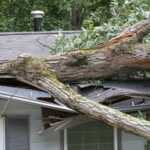Federal Regulations and Their State-Level Implementation
Federal asbestos laws are designed to ensure safety across the nation. These laws, such as OSHA’s Construction Standards and the EPA’s National Emission Standards for Hazardous Air Pollutants, set strict guidelines for handling asbestos in workplaces, schools, and homes. States often adopt these federal policies but may adjust them to address local needs. For example, some states implement additional requirements for asbestos abatement projects or stricter penalties for violations. This interplay between federal standards and state-level customization forms the backbone of asbestos regulation in the U.S.
Key Differences Between Federal and State Asbestos Laws
While federal laws create a baseline for asbestos management, state laws can vary significantly. States differ in areas such as:
- The scope of asbestos abatement certifications.
- Fines and penalties for non-compliance.
- Specific rules for asbestos litigation, including statutes of limitations.
This variation means that individuals and businesses must be aware of both federal and state requirements to remain compliant. In some cases, these differences can lead to confusion, especially when states enforce more stringent rules than federal guidelines.
Role of State Governments in Enforcing Federal Asbestos Policies
State governments play a critical role in enforcing federal asbestos laws. They often serve as the primary agencies responsible for inspections, certifications, and public awareness campaigns. For instance, the Asbestos Hazard Emergency Response Act (AHERA) tasks states with accrediting inspectors and abatement professionals. State-level enforcement ensures that federal policies are effectively implemented on the ground, addressing unique regional challenges and protecting public health.
State-Specific Asbestos Litigation Laws
Medical Criteria for Filing Asbestos Claims
Many states have established specific medical criteria that claimants must meet before filing an asbestos-related lawsuit. These criteria are designed to ensure that only individuals with verifiable asbestos-related illnesses proceed with claims. For instance, claimants may need to provide detailed medical records, pathology reports, or imaging results confirming conditions like mesothelioma or asbestosis. This helps courts prioritize cases involving serious health impacts while minimizing frivolous claims.
Statute of Limitations for Asbestos Cases
The statute of limitations for asbestos litigation varies widely across states. Generally, the clock starts ticking from the date of diagnosis or when the illness could reasonably have been discovered. Some states allow up to three years, while others may limit the window to just one year. It’s crucial for individuals to act promptly, as missing the deadline can bar them from seeking compensation entirely. This variability highlights the importance of understanding state-specific timelines.
Punitive Damages and Successor Liability
Punitive damages in asbestos cases are awarded to penalize negligent behavior by companies. However, not all states permit such damages, and those that do often impose caps. Successor liability laws, on the other hand, determine whether a company that acquires another can be held responsible for the predecessor’s asbestos liabilities. These laws aim to balance fairness for plaintiffs while protecting businesses from undue burdens. States like Texas and Pennsylvania have specific provisions addressing these issues.
Examples of State Asbestos Laws
California’s Approach to Asbestos Regulation
California has long been at the forefront of asbestos regulation. The state’s laws aim to reduce asbestos exposure, particularly in workplaces and schools. For instance, amendments to Title 8 in 2007 mandate that employers take specific measures to limit exposure and maintain detailed records of any incidents. Additionally, schools are required to keep abatement records for at least 30 years, highlighting the state’s commitment to public health. California’s proactive stance reflects its history of high asbestos-related health issues, stemming from its mining and industrial legacy.
New York’s Historical Context and Current Laws
New York’s connection to asbestos dates back to the 1800s when it was a hub for asbestos manufacturing. This history has left a lasting impact, with many workers developing asbestos-related diseases. Today, New York has implemented strict laws to minimize exposure and provide legal avenues for affected individuals to seek compensation. The state’s legal framework ensures that victims of asbestos exposure have access to justice while emphasizing prevention through stringent regulations.
Texas’ Legislative Changes to Expedite Asbestos Cases
Texas has taken a unique approach to asbestos litigation by streamlining the legal process. Recent legislative changes focus on expediting cases to reduce court backlogs. These laws prioritize claims from individuals with severe health conditions, ensuring quicker resolutions for those in urgent need. Texas also enforces specific medical criteria for filing claims, which helps to filter out cases without substantial evidence of harm. This targeted approach balances efficiency with fairness in handling asbestos-related lawsuits.
State Management of Asbestos Regulations
Fines and Penalties for Violating Asbestos Laws
States impose fines to discourage violations of asbestos regulations, and these penalties vary widely. For example, Kansas fines up to $5,000 per offense, while Hawaii imposes penalties as high as $10,000. These fines are designed to ensure compliance and deter the use of asbestos-containing products. Strict enforcement of these penalties reflects the seriousness of asbestos-related hazards.
Accreditation of Asbestos Inspectors and Abatement Professionals
The accreditation process for asbestos inspectors and abatement professionals is largely shaped by federal standards, such as those outlined in the Asbestos Hazard Emergency Response Act (AHERA). States often adopt these guidelines to ensure that professionals are properly trained. This includes:
- Certification courses covering asbestos identification and safe removal techniques.
- Periodic renewal of licenses to maintain up-to-date knowledge.
- State-specific exams to address regional regulations.
Focus on Existing Products Versus New Manufacturing
Most state-level asbestos laws focus on managing risks associated with existing asbestos-containing materials rather than regulating new manufacturing. This is because federal laws, such as the Toxic Substances Control Act, already restrict the introduction of new asbestos products. State efforts often target areas like:
- Safe handling and removal during building renovations.
- Disposal protocols for asbestos waste.
- Monitoring and managing asbestos in older structures, such as schools and public buildings.
Asbestos Laws in High-Litigation States
Pennsylvania’s Court-Managed Asbestos Procedures
Pennsylvania has long been a hotspot for asbestos litigation. The state allows its courts to oversee case management, ensuring a structured approach to handling the high volume of claims. These procedures include specific rules on physical impairment requirements, punitive damages, and successor liability. Many cases continue to be filed here due to the state’s industrial history and the prevalence of asbestos exposure.
Illinois’ Comprehensive Asbestos Regulations
Illinois has taken a comprehensive stance on asbestos litigation. The state mandates strict filing requirements, including detailed documentation of exposure and medical conditions. This approach aims to streamline cases and prioritize those with the most severe health impacts. Illinois courts are also known for their transparency in managing asbestos trust fund claims, which has influenced how cases are resolved.
Florida’s Unique Approach to Asbestos Litigation
Florida stands out for its unique legal framework surrounding asbestos cases. The state has implemented laws to expedite the litigation process, reducing delays for plaintiffs. Florida also emphasizes medical criteria, requiring claimants to provide substantial evidence of asbestos-related illnesses before proceeding with lawsuits. This focus on efficiency has shaped the state’s reputation as a significant player in asbestos litigation.
States with Stricter Asbestos Regulations
Minnesota’s Asbestos Abatement Act
Minnesota has taken a proactive stance with its Asbestos Abatement Act, which was introduced in 1987. This act lays down specific requirements for asbestos abatement projects, including the licensing and certification of contractors. The law also enforces strict reporting standards and airborne asbestos limits after abatement. While Minnesota has not outright banned all asbestos-containing products, it has prohibited the use of asbestos insulation in new construction—a significant step in reducing exposure risks.
New Jersey’s Ban on Asbestos
New Jersey stands out as the only U.S. state to have enacted a complete ban on asbestos. This bold move reflects the state’s commitment to public health and environmental safety. In addition to the ban, New Jersey enforces stringent penalties for violations of asbestos regulations. These measures serve as a deterrent to non-compliance and highlight the state’s leadership in asbestos risk management.
Hawaii’s High Penalties for Violations
Hawaii has adopted a different approach by focusing on high penalties for those who violate asbestos laws. The state imposes fines of up to $10,000 per offense, making it one of the most punitive in the nation. This strategy aims to ensure strict adherence to asbestos regulations and to minimize the risks associated with improper handling and disposal of asbestos materials. By emphasizing enforcement through financial penalties, Hawaii underscores the seriousness of asbestos safety.
Regional Variations in Asbestos Risk Management
Western States and Mining-Related Asbestos Laws
In the western United States, asbestos laws often focus on addressing risks linked to mining activities. States like California and Arizona have a history of asbestos mining, which has left behind significant environmental hazards. One key challenge in these regions is managing naturally occurring asbestos (NOA), which can become airborne during construction or other land-disturbing activities. Regulations in these states often require strict monitoring and mitigation measures for projects near NOA deposits.
Southern States and Industrial Asbestos Exposure
Southern states, including Texas and Louisiana, have historically faced asbestos risks tied to industrial use. Shipbuilding, oil refining, and manufacturing were major industries in this region, leading to widespread asbestos exposure. Laws here tend to emphasize workplace safety and hold employers accountable for protecting workers. Some states have also implemented programs to assist individuals exposed to asbestos in industrial settings.
Northeastern States and Legacy Asbestos Issues
The northeastern U.S., with its older infrastructure and industrial history, grapples with “legacy” asbestos concerns. Buildings constructed before the 1980s often contain asbestos in insulation, flooring, and other materials. States like New York and Pennsylvania have developed comprehensive laws to manage asbestos abatement in schools, public buildings, and residential properties. These laws typically include licensing requirements for abatement professionals and detailed reporting standards to ensure public safety.
Impact of State Laws on Asbestos Abatement
Licensing and Certification Requirements
State laws play a critical role in regulating who can conduct asbestos abatement work. Proper licensing and certification are mandatory in nearly every state to ensure that only qualified professionals handle this hazardous material. States like Minnesota, for instance, have stringent requirements for certifying asbestos inspectors and abatement workers. These certifications often include mandatory training, exams, and periodic renewals to keep professionals updated on safety protocols.
Airborne Asbestos Limits After Abatement
After an abatement project, states enforce strict limits on airborne asbestos levels to protect public health. Air quality monitoring is a standard requirement, with states mandating post-abatement testing to confirm that asbestos fibers are not lingering in the environment. Some states, such as California, have set even lower thresholds than federal standards, reflecting their commitment to minimizing exposure risks.
Record-Keeping and Reporting Standards
States also impose detailed record-keeping and reporting obligations on abatement projects. Contractors must document everything from the amount of asbestos removed to the disposal methods used. These records are not just for compliance; they also serve as a vital reference for future inspections or legal inquiries. States like New York require these records to be retained for decades, ensuring long-term accountability for asbestos management.
Challenges in Harmonizing State Asbestos Laws
Conflicts Between State and Federal Regulations
One of the biggest hurdles in asbestos law is the disconnect between federal and state regulations. While federal agencies like the EPA and OSHA establish nationwide standards, states often adapt or expand these rules to meet their own needs. This can lead to inconsistencies. For example, some states impose stricter penalties or additional safety measures, while others barely enforce federal guidelines. This patchwork system creates confusion for companies operating in multiple states and risks leaving workers unprotected in areas with lax enforcement.
Forum Shopping in Asbestos Litigation
Forum shopping is a legal strategy where plaintiffs file lawsuits in states with laws or courts they believe are more favorable to their case. This is common in asbestos litigation due to the varied laws between states. States with lenient evidentiary requirements or higher damage awards often see a surge in cases, even if the exposure occurred elsewhere. This not only clogs up court systems in those states but also raises ethical questions about fairness. Efforts to curb forum shopping have included stricter jurisdictional rules, but the issue persists.
Disparities in Worker Protection Standards
Worker protection laws related to asbestos vary widely across the country. Some states mandate rigorous training and certification for handling asbestos, while others have minimal requirements. This disparity leaves workers in certain states more vulnerable to exposure and related diseases, such as mesothelioma. Researchers have even noted that the risk of lung tumors and mesotheliomas increases significantly among workers exposed to asbestos who also smoke. Learn more about asbestos exposure risks. Addressing these gaps is essential to ensure all workers, regardless of location, receive equal protection.
Future Trends in State Asbestos Legislation
Emerging State-Level Bans on Asbestos
In recent years, there has been a growing push for states to enact their own bans on asbestos, even as federal legislation lags behind. For example, while New Jersey remains the only state to fully ban asbestos, other states are considering similar measures. Advocates argue that state-level bans are a necessary step to protect public health, especially in the absence of comprehensive federal action. This trend is likely to gain momentum as awareness of asbestos-related diseases continues to grow. States may also look to impose stricter fines and penalties for violations, following the lead of jurisdictions like Hawaii, which already enforces penalties up to $10,000 per offense.
Advocacy for Uniform Asbestos Laws
The lack of consistency in asbestos laws across states has led to calls for more uniform regulations. Unequal standards can create confusion for businesses and individuals navigating asbestos compliance and litigation. Advocacy groups, such as the Asbestos Disease Awareness Organization (ADAO), are pushing for streamlined laws that balance state autonomy with a unified approach to public safety. A more cohesive legal framework could also address issues like “forum shopping,” where plaintiffs choose states with more favorable legal environments for their claims. However, achieving this balance remains a significant challenge.
Technological Advances in Asbestos Detection and Abatement
Technology is playing an increasingly important role in shaping asbestos legislation. Emerging tools for detecting asbestos in buildings and the environment are becoming more accessible and accurate. For example, some states are considering regulations that incorporate modern scanning technologies to identify asbestos risks more efficiently. On the abatement side, innovations in removal techniques could lead to safer and more cost-effective processes, prompting updates to existing laws. States may also mandate the use of these advanced methods to ensure higher safety standards during asbestos removal projects.
Websites
Robert King Mesothelioma Law Services










